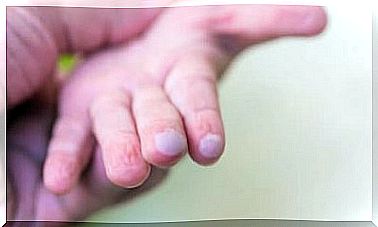The Blood In The Umbilical Cord Contains The Secrets Of Life

The miracles of life are as amazing as they are mysterious. Even today, with all the science and technology available, there are still secrets about the evolution of human life. The blood in the umbilical cord is rich in stem cells, and this means that it guards a large part of the secret.
During pregnancy, a string of around 56 cm unites the mother and the baby. It goes from the baby’s belly to the placenta. Its main function is to provide the baby with nutrients and oxygen from the placenta and to transport the baby’s waste to it.
When the baby is in the womb, the umbilical cord is part of its body, joined by two arteries. One of these is for extracting the waste the baby produces, while the other provides the small body with oxygen.
This long, useful strand also transmits antibodies. Near the end of pregnancy, the umbilical cord transmits antibodies that the mother develops during her lifetime through the placenta to the baby.
But there is more to come. The blood in the umbilical cord is rich in stem cells, which are known as the building blocks of life because they can reproduce or create other cells. They can divide and make copies of themselves, colonize, integrate and create new tissues.
Stem cells contain all the genetic information needed to form all the organs in the body. The umbilical cord contains millions of them. This string, which some parents keep as a souvenir when the baby is born, comes with a large part of life’s secret.
The blood from the umbilical cord is actually the main source of stem cells for children. These cells are identical to those found in the bone marrow. This makes them perfect for counteracting diseases that can threaten the baby’s life.
Umbilical cord blood contains hundreds of cells that can fight certain types of cancer, such as leukemia, non-Hodgkin’s lymphoma and multiple myeloma.
These cells also have the ability to fight certain types of anemia, such as aplastic and Fanconi’s anemia, as well as other diseases, including Hunter’s disease, lupus, and severe combined immunodeficiency. Researchers in Spain are studying the possibility of using them to fight blood cancer.

Stem cells in the placenta and the blood in the umbilical cord have the interesting property of immunological immaturity. According to experts, this is often an advantage because the risk is less that the recipient will reject them.
Another advantage of cells from the umbilical cord is that in addition to ensuring exact compatibility with other cells in the baby, they also have a higher chance of being compatible with other members of the family.
The procedure for extracting stem cells from the blood in the umbilical cord or placenta is painless. In many countries, there are ways to store these cells and use them later to counteract the health problems of the child or their family.
In addition to the many stem cells the umbilical cord provides, British researchers have now discovered that delaying the cutting of the umbilical cord by around three minutes can significantly improve your baby’s health.
In healthy newborns, these three minutes can mean that the iron levels in the baby increase, which reduces the risk of anemia. This is just one of the results published in the British Medical Journal (MBJ).
Postponing the cutting of the umbilical cord should be part of the standard care of newborns from pregnancies without complications, said doctors Ola Andersson and Magnus Domellöf in a press release to BBC Mundo.
This research and other studies have revealed some of the mysteries surrounding this string. It shows how it is an asset that can improve health and help other people.









